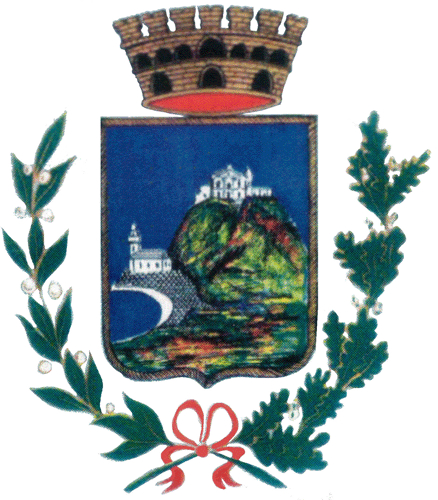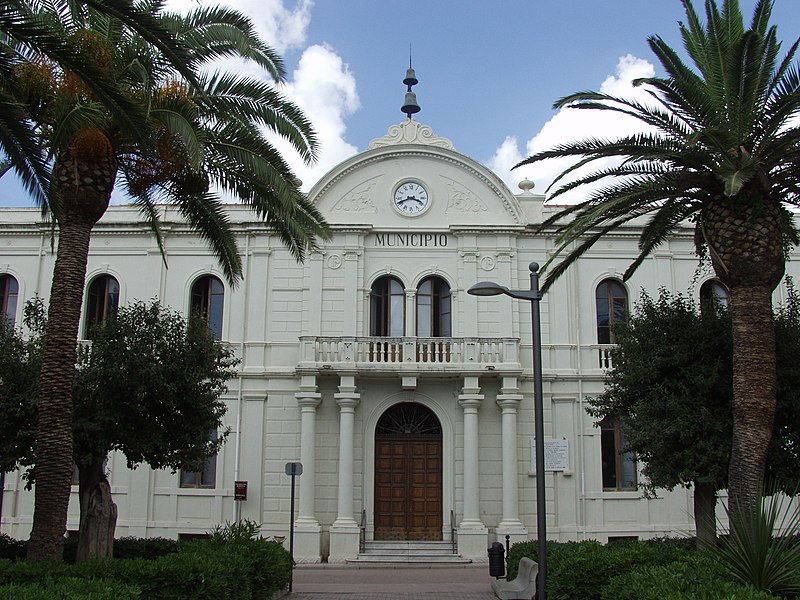

Capo d’Orlando è un comune della costa tirrenica della provincia di Messina posto di fronte all’arcipelago delle Eolie. In origine era “Agatirno” dal nome del suo fondatore Agatirso, figlio di Eolo, re dei venti, nello stesso periodo della guerra di Troia (1218 a.C.). Esso si estendeva oltre il promontorio includendo le contrade di S. Martino, Certari, Catutè, S. Gregorio e Scafa.
Intorno al 210 a.C. la città, “società composta di ladri, esuli e malfattori”, probabilmente come conseguenza del culto dionisiaco che vi si praticava, subì la deportazione di circa 4000 persone.
Il toponimo attuale è legato al paladino Orlando attribuito, pare, da Carlo Magno che vi si fermò di ritorno da un pellegrinaggio a Gerusalemme.
Il 4 luglio 1299 è sede di una battaglia navale tra Giacomo II d’Aragona e Federico II di Sicilia per la reggenza della Sicilia nell’ambito degli scontri tra Aragonesi e Angioini.
Nel 1359 Federico IV conferisce a Vinciguerra d’Aragona i possedimenti e il Castello d’Orlando.
Dal XV sec. nelle terre di Malvicino veniva coltivato il “cannamele” (canna da zucchero) per cui si procedette alla costruzione di un trappeto (pressa) per la lavorazione dello zucchero e a difesa delle coltivazioni fu eretta una torre fortilizia.
A S. Gregorio sorse una tonnara relativa al tratto di mare tra Capo d’Orlando e Capo Calavà.
Sulle rovine del castello nel 1600 è sorto il Santuario di Maria Santissima, in seguito al rinvenimento di una piccola statuetta della Madonna che è stata proclamata patrona di Capo d’Orlando.
Nella metà del XVIII sec. il primo nucleo abitativo era costituito da famiglie di pescatori che si stanziarono a nord del promontorio, in località Piana oltre alle colture del gelso e della vite fu introdotta la coltivazione degli agrumi, soprattutto limoni su cui si è incentrata l’economia del territorio.
All’inizio del XX sec. ebbero origine le prime aspirazioni con varie dimostrazioni pubbliche all’autonomia dal comune di Naso, raggiunta con la L. 1170 del 25 giugno 1925
Il 27 settembre 1925 fu inaugurato il nuovo Comune di Capo d’Orlando.
Notevole è la Villa di Vina, abitata da Casimiro, Lucio e Agata Piccolo, signori di Calanovella (imparentati con i Filangeri-Cutò e Tomasi di Lampedusa), in essa è un museo che racchiude molte opere d’arte e altri oggetti di valore.
Recentemente sono venuti alla luce i resti di una villa romana in Contrada Bagnoli, tale ritrovamento di notevole importanza storica ha incrementato l’interesse turistico per Capo d’Orlando.
Capo d’Orlando is a town on the Tyrrhenian coast in the province of Messina located in front of the Aeolian archipelago. Originally it was “Agatirno” from its founder Agatirso, son of Aeolus, king of the winds, in the same period of the Trojan war (1218 B.C.). It extended beyond the heritage including the districts of S. Martino, Certari, Catutè, S. Gregorio and Scafa.
Around 210 B.C. the city, “society made up of thieves , exiles and criminals”, suffered the deportation of about 4000 people, probably as a consequence of the Dionysian cult, that was practiced there.
The current toponym is linked to the paladin Orlando attributed, perhaps, by Charlemagne who stopped there on his return from a pilgrimage to Jerusalem.
On 4 July 1299 Capo d’Orlando was the site of a naval battle between James II of Aragon and Frederick II of Sicily for the regency of Sicily in the context of the clashes between Aragonese and Angevins.
In 1359 Frederick IV gave to Vinciguerra D’Aragona the possessions and the castle of Orlando.
From the fifteenth century. in the lands of Malvicino was cultivated the "cannamele" (sugar cane) so it proceeded to a trappeto (press) for the processing of sugar and a fortress tower was erected to defend the crops.
In S. Gregorio arose a “tonnara” (tuna fishery) relating to the sea area between Capo d’Orlando and Capo Calavà.
Following the discovery of a small statue of Our Lady who was proclaimed patroness of Capo d’Orlando, on the ruins of the castle, in 1600 arose the Sanctuary of Maria Santissima.
In the middle of the eighteenth century the first settlement was made up of fishing families who settled nord of the cape in Piana village in addition to the cultivations of mulberry and vine it was introduced the cultivation of citrus, especially lemons on which the economy of the territory is focused.
At the beginning of the 20th century were the first attempts to achieve independence from the Municipality of Naso through various public demonstrations, independence obtained by the law 1170 of june 25, 1925.
On 27 September 1925 the new Municipality of Capo d’Orlando was inaugurated.
Remarkable is the Villa of Vina inhabited by Casimiro, Lucio and Agata Piccolo, lords of Calanovella (related to the Filangeri-Cutò and Tommasi di Lampedusa), in it there is a museum that contains many art works and others valuable objects.
The remains of a roman villa with a thermal area in Contrada Bagnoli have recently come to light, this finding very important has increased the tourist interest for Capo d’Orlando.
LINK: MUNICIPALITY OF CAPO D'ORLANDO